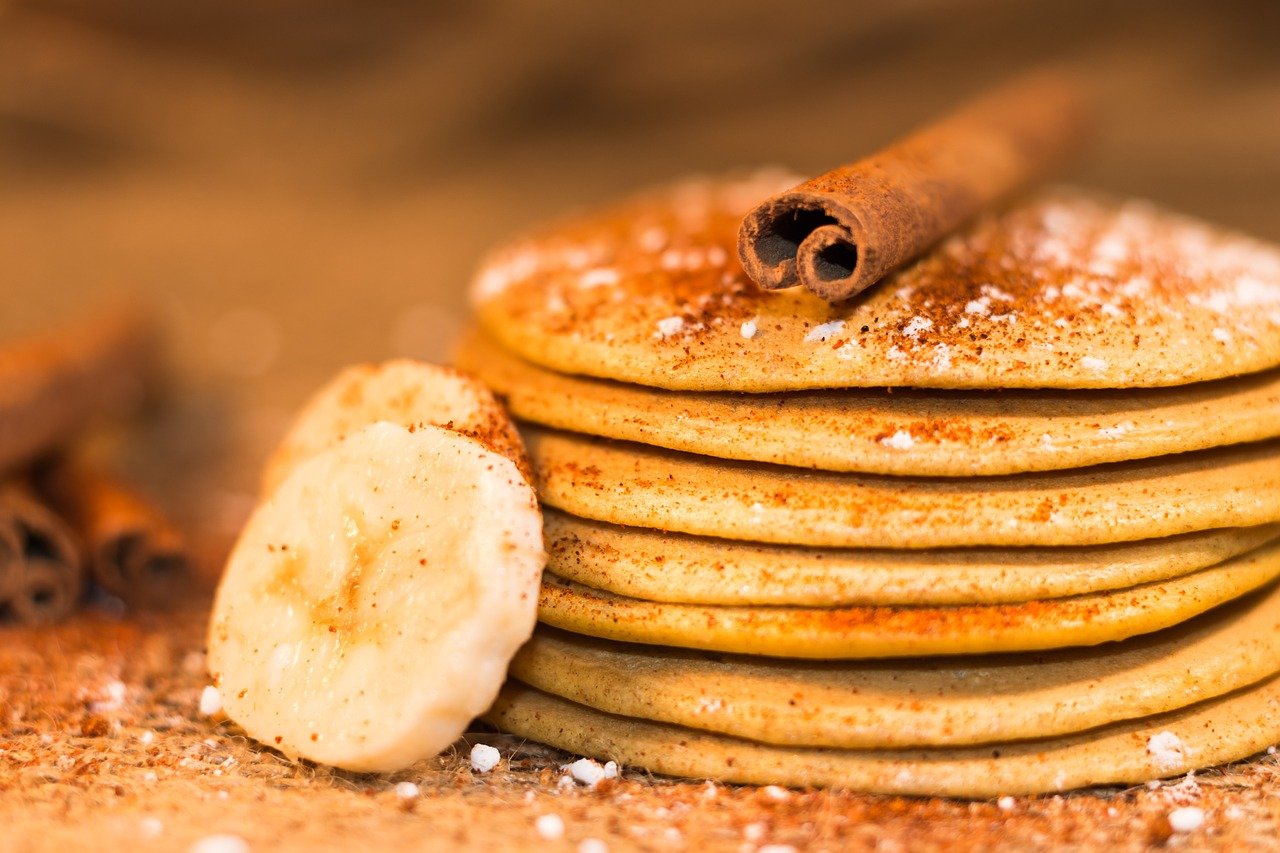These tips are for those who are tired of ala pancakes, which have nothing to do with real, delicious, tender American pancakes. Often you see cute pictures on the internet of mouth-watering looking pancakes, but in reality too dense and tasteless, and with a hint of baking soda
The most important things
All ingredients (except for butter or vegetable oil and baking powder) must be straight from the fridge. Without getting into the chemistry, gluten (regular flour) can quickly turn dough into glue once it has stood or warmed up. This thick, too dense mass cannot rise, and you can forget about the porous, puffy structure of the pancake.
Prepare the ingredients in advance by arranging them in bowls. Why? See point 1. Briefly – for speed. I usually mix the dry ingredients together and put the bowl in the fridge in the evening.
You never add baking soda alone to pancakes, much less carbonated baking soda. It’s always either a single baking powder or a combination of baking powder and baking soda. Baking soda is quenched with ingredients that are inherently acidic.
The mixer is your enemy, with the exception of whipping whites, about that below. A hand whisk is just what you need. Why? The mixer activates our leavening agent before frying (the fast spinning attachments heat up the batter) and as a result the pancakes won’t rise.
For fluffier pancakes you can beat the egg whites separately to soft peaks and beat them with a spatula at the very end of kneading, kneading gently and patiently from top to bottom, from the sides to the centre, for no more than 1 minute. The dough is usually a little heterogeneous, which is normal; our job is to incorporate the egg whites and keep the leavening agent active.
Also important
If you have a pancake maker, set the heat to maximum and wait for 7 minutes. Another thing is if you are baking in a frying pan. Always use a non-stick pan with thick walls. I don’t recommend those inexperienced in pancake baking to use a cast iron one, it’s too “reactive”. Also an unfortunate choice is a Chinese thin aluminium pan. Your pancakes will burn in the blink of an eye. Now for the heat. The pan needs to be well heated but not smoking. We need a surface temperature that will make our pancakes rise easily, give a medium browning and have time to bake. How to achieve this? First of all, put a glass of water in the freezer in advance and let it get a thin crust of ice. After 10 minutes, place our thick-walled, good pan over a medium heat or on an electric cooker with the knob turned to 3.5 out of 6. Heat the pan for 5 minutes, then give it a “ready” test. Take out the ice water, break the ice crust and dip 2 fingers into the glass. Spritz the surface of the pan. If the water droplets evaporate instantly or are “thrown overboard”, you have overheated. If the water droplets “scramble” in the place where they were thrown, do not move anywhere and evaporate relatively slowly – underheat. If the water droplets split and some of them evaporate quickly in the centre of the pan and the rest of them have to “dance” – the pan has heated up perfectly. What happens if the pan is cold or scalding hot? Nothing will happen, the pancakes will lie wet on the surface with no sign of volume.
As the pan continues to get hot during baking, turn down the gas or temperature a little at 3-4 pancakes. You will notice this as the pancakes will turn out more and more “tan”.
Pour the batter into the pan to the extent of ½ a soup ladle. Lightly “smear” the resulting circle with the back of the ladle, increasing the pancake diameter by 1 cm. Do not overdo it.
How long does it take to bake? Here are the details. It sounds fun, but it all depends on how warm your kitchen is. If you’re wearing 2 coats and your only source of heat is the cooker, then bake for 1 min 45 sec on the first side and 45 sec on the second. If the kitchen is warm and you are cooking in a light t-shirt, then bake for 1 min 15 sec on the first side and 30 sec on the second.
You should not calculate the cooking time by the holes in the pancakes (“eyes” in pancakes are holes through which the valuable carbon dioxide escapes, making the pancakes voluminous). But pancakes are not pancakes. There are drier options, and there are ones that don’t need soaking (with mineral water, vinegar and butter, etc.). For example, with mineral water, the dough for these pancakes is porous from the beginning and it is unreal to understand by “eyes” that it is time to turn the pancakes.
Don’t check if your pancakes are ready by tearing them in half as soon as they come off the cooker. Stack them up and leave them untouched. Once the last pancake is ready – you can now check. This is how our pancakes finish in texture and flavour.
Do not grease the pan when baking the pancakes. The oil promotes a hard crust on the surface, which should not be the case. Recall that the pancakes are soaked in syrup at the end of baking.
So, the pancakes are nicely stacked on a plate. Let’s proceed with the soaking. Pour syrup or liquid honey over the pancakes, put a piece of butter and wait for 3-5 minutes. It is not necessary to cover them so that they don’t get too dry.
One last thing. Do not store the pancake batter until the next morning, bake it all at once. Put the leftover pancakes in a sandwich bag (polythene) or in a vacuum container. In the morning just reheat in the microwave (30-50 seconds). Good cooked pancakes don’t taste any different in a day or two.

